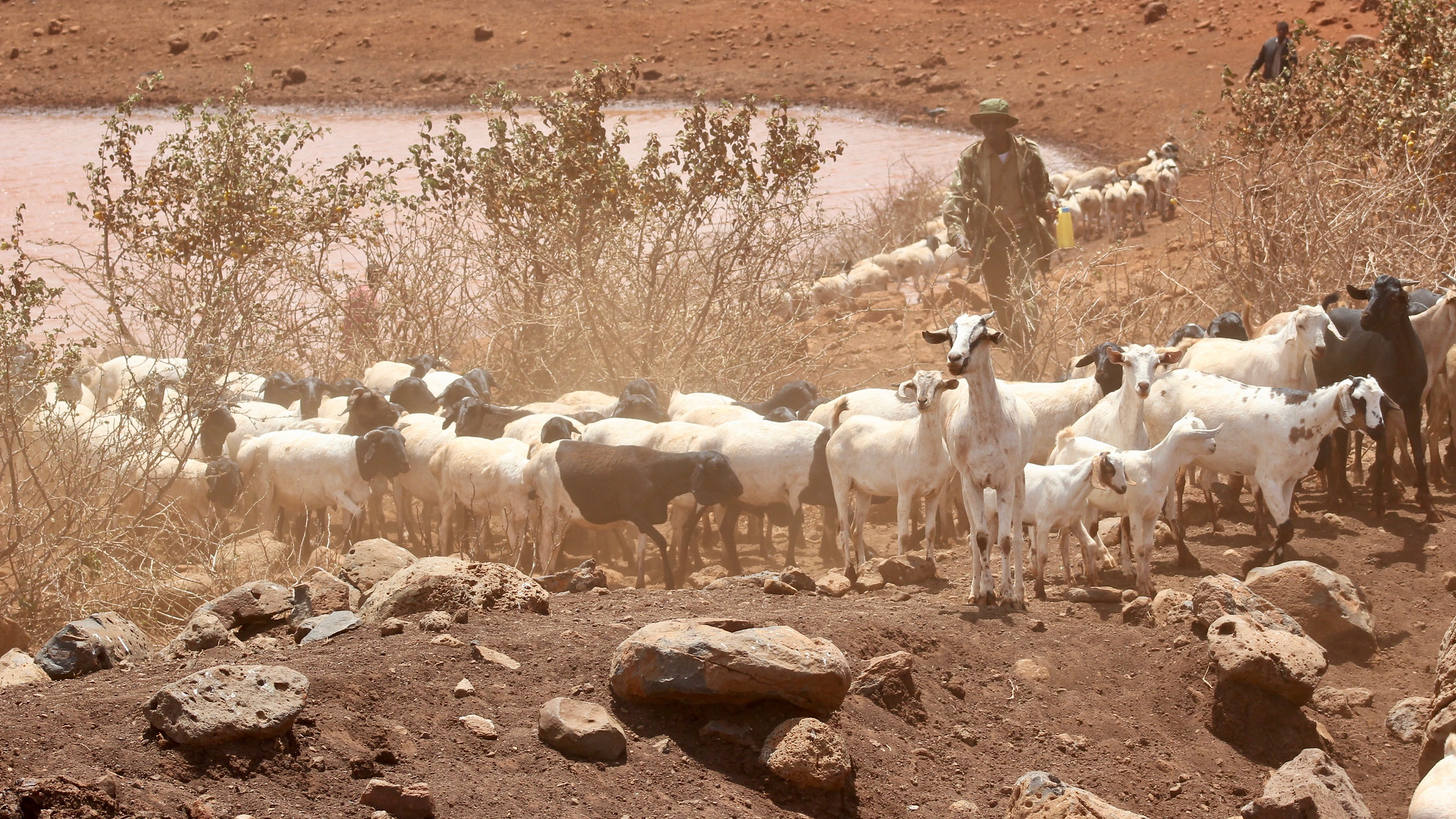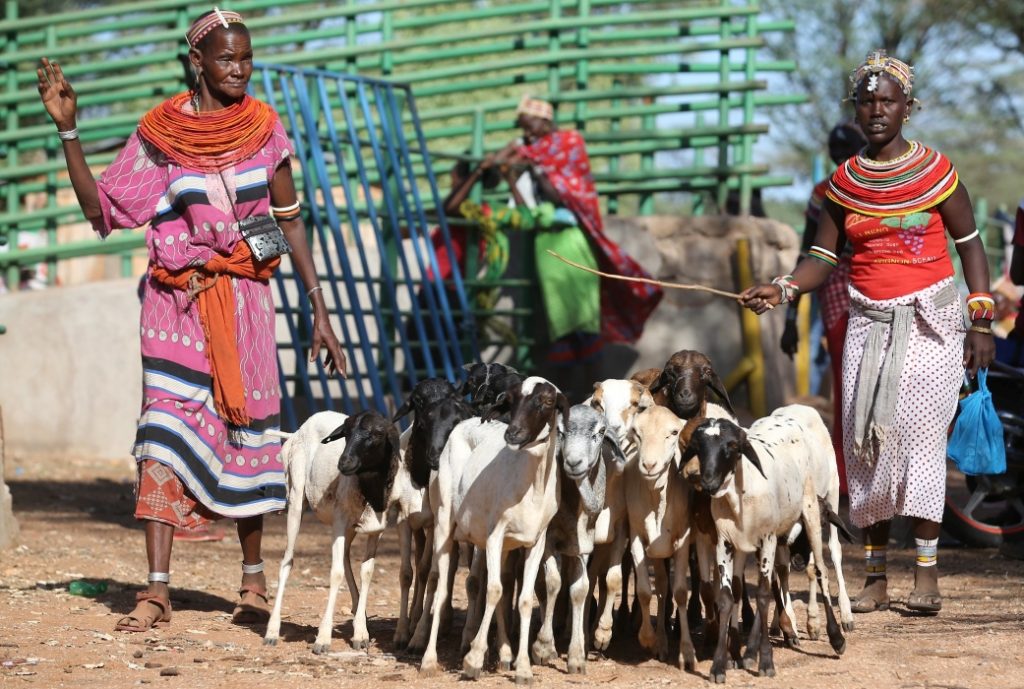COVID-19 reinforces pre-existing market risks for pastoralists in northern Kenya

Following his blog on the winners and losers in livestock commercialisation in northern Kenya and the accompanying working paper, researcher, pastoral development and dryland management specialist Guyo Roba examines the impact of COVID-19 market risks, explaining how strengthening their resilience is a key priority.
Access this previous blog, and Working Paper 39, here.
This blog is linked to APRA Round One and Round Two country reports on the Impact of COVID-19 on Food Systems and Rural Livelihoods in Kenya.
Read the full APRA synthesis report on the Rapid Assessment of the Impact of COVID-19 on Food Systems and Rural Livelihoods in Sub-Saharan Africa, here.
Written by Guyo Roba
Livestock represent a marketable asset owned by pastoralists in northern Kenya, as well as other arid and semi-arid southern rangelands. Livestock marketing in these rural communities are highly personal exchanges, emphasised by more familiar relations between traders and pastoralists, particularly at the informal markets where the organisational structure or presence of authorities are minimal, and in a more controlled interactions at the formal markets. The latter offer opportunities for buyers and sellers to congregate in large numbers, and trade in substantial volumes. Although the numbers of market participants are usually very high in relatively vibrant markets that are locally referred to as “hot” markets, the number of both the market participants and animals transacted varies from one market to another.
Typically, transactions in these markets involve lengthy negotiations between buyers and sellers, while deals are usually sealed through closer social interactions that involve a seller and buyer holding hands, raising and releasing mid-way to signify closed deal(s). Since most local markets have actors with common ethnic identity, other kinship discussions also take place. As such, markets also attract other people interested in dialogues that go beyond price negotiations to other exchanges related to the potential of grazing lands, animal health, and state of security in specific area. However, such ethnic connections cannot cushion pastoralists to deal with multiple risks, such as supply uncertainty, price volatility, high transaction costs, post-harvest losses and other market risks.

Common risks in livestock trade
Risks are common and highly unpredictable events that distinguish between success and failure in livestock trade. Risks occur at all stages of the marketing channel, from the purchase, collection stage through the transport to their final sale at a terminal market. Several attributes of livestock trade increase risks and the likelihood of losses, including live transportation, the high volume and value of animals moved, and the credit sales and possible payment default at the terminal markets. These risks applies to all, irrespective of the experience of a market actor, the scale and geographical scope of his/her trade activities or affiliation to a particular ethnic group.
In long-distance livestock trade, the risks increase towards the terminal markets. This include the risk of losing animal during the collection, the danger of the animal catching diseases while being hauled over long-distances, livestock thefts, loss from asphyxiation from poor and frequently overloaded conditions of livestock trucks. Weight loss or mortality is also more likely to occur when trucks are delayed for several hours at the multiple police roadblocks.
Although both pastoralists and local traders have adapted to mitigate common risks through strategies like collaboration on purchase and sales, pooling working capitals and sharing of information, the level of risks are aggravated with the emergence of COVID-19 pandemic, which is already disrupting food supply chains, including along pastoral value chains.
COVID-19 reinforces existing risks
The impacts of COVID-19 pandemic in pastoral areas of northern Kenya, due to transport restrictions and quarantine measures, are likely to impede the access of pastoralists to input and output markets, thereby decreasing their cash flow, profit margins and reinforced already precarious situation of pastoral and agro-pastoral households. Shortages of market labour due to COVID 19 travel restrictions have also widened, which could slow market activities, most notably for labour-intensive activity of collecting livestock prior to transportation to terminal markets. COVID 19 movement restrictions have also affected the itineraries of traders from outside pastoral areas to visit and purchase animals. This has led to external traders offering relatively better prices to pastoralist.
Similarly, the closure of international transport routes, particularly the sheep and goats export to Middle East countries may also result in reduced incomes for traders, livestock keepers and other actors along the meat export supply chains. So far, Saudi Arabia, Dubai, Oman, Qatar and Kuwait have all closed their doors to livestock imports from Kenya and other countries in the region.
The intermittent closure of live animal markets by the government have affected the operations of both formal markets as well as informal market in more remote areas and by extension contributed to liquidity challenges among pastoral households and disrupted their livelihoods. Meanwhile, the retention of some level of restrictions such as night curfews makes it difficult for pastoralists and buyers to travel to markets either for fear of being contaminated or because of the high cost of transport. This limits the number of external traders and buyers in local markets and overall affects price competitiveness, household incomes and household purchasing power. Together, these weaken households’ food security and preparedness to manage drought related stress.
Way forward
Strengthening resilience of pastoralists and agro-pastoralists facing the negative impacts of the coronavirus pandemic is a priority. The immediate intervention should aim to maintain productivity and strengthen livelihood and resilience of the vulnerable actors by supporting existing community safety nets. This could entail provision of targeted food support to vulnerable households, short-term credits, subsidies or financial support to assure business continuity for traders, agro-vets, butchers and other actors.
In the long term, strengthening of regional value chains should be a priority to diversify risks and increase resilience to future shocks. ASAL counties should increase investments to fast-track regionalisation of livestock trade, operationalise abattoirs and engage private sector players in bulk meat supply chains. This offers both the alternative trade avenue and ensure seamless connectivity.
Invest in value chain management information systems at national and county levels. The weak information system in livestock trade implied that the social restrictions of COVID-19, led to slump in market activities. As such, investing in appropriate ICT technologies and infrastructures can offer mechanisms to crowdsource market prices to make real-time price information available to buyers and sellers and offer a stronger platform for open purchase and sales orders. Success will result in improved coordination and tighter market linkages that ICT solutions can provide.
Cover photo: Herder drives his goats in Marsabit County. Credit: Credit: Fredrick Omondi
Please note: During this time of uncertainty caused by the COVID19 pandemic, as for many at this time, some of our APRA work may well be affected but we aim to continue to post regular blogs and news updates on agricultural policy and research.
